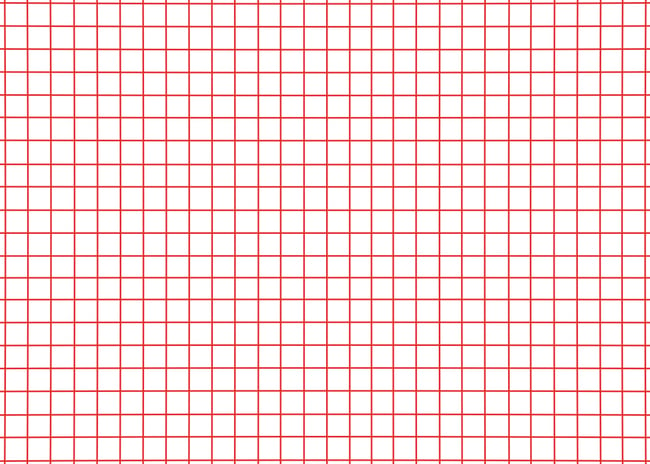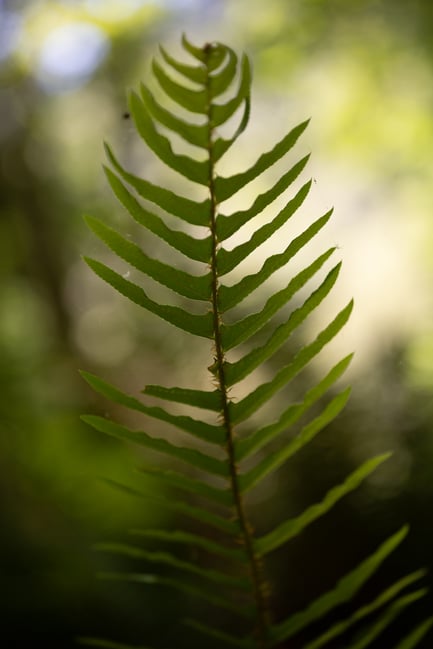Focusing Characteristics
The Nikon Z MC 50mm f/2.8 autofocuses quickly at non-macro distances, although the speed and hunting behavior get worse the closer you focus. It’s never bad, but never best-in-class. However, the accuracy once it locks on is fantastic, as with the rest of Nikon’s Z lenses.
Because this lens has a modest 50mm focal length, the working distance at 1:1 magnification is very short at just 5.7 cm (2.2 inches). This is the distance between the front of your lens and your subject. (Note that this is a different measurement from the minimum focusing distance figure that you’ll see in specification charts, which is measured between the camera sensor and the subject.) The result is that you only have a couple of inches of room between the lens and the subject at 1:1 magnification, which can make it easy to block the light or scare off skittish animals if you aren’t careful. That’s why a lot of macro photographers prefer longer macro lenses of at least 90mm, and ideally 150mm or more.
Also, keep in mind that the effective maximum aperture on this lens becomes narrower as you focus at higher magnifications. That’s technically true of all lenses, but macro lenses can focus close enough to make it apparent. On the Nikon Z MC 50mm f/2.8, the maximum aperture at 1:1 magnification is f/5.6, not f/2.8. This isn’t a big deal considering that 1:1 macro photography is usually done at narrow apertures anyway in order to achieve sufficient depth of field.

Distortion
The Nikon Z MC 50mm f/2.8 Macro has hardly any distortion, which is great considering that some photographers will use macro lenses like this to copy images from 35mm film. In the lab, I measure just 0.62% pincushion distortion on this lens, which is negligible. Here’s a simulation of 0.62% distortion:

Vignetting
In uncorrected images, the Nikon Z MC 50mm f/2.8 has moderate levels of vignetting wide open at f/2.8. It quickly becomes negligible as you stop down, with just 1 stop of vignetting by f/4. At macro focusing distances, vignetting is negligible throughout the aperture range. Note, as I mentioned a moment ago, the maximum aperture at 1:1 magnification is f/5.6.
Here’s a full chart of vignetting levels as measured in our lab:

Keep in mind that some software, including Adobe Lightroom, directly reads information from your in-camera vignetting reduction setting. If you want your photos from this lens to have full corrections by default, you need to turn the vignetting correction to “High” in-camera. This is true even if you’re shooting RAW files. It’s not a big deal because you can always add or remove vignetting manually, but I recommend turning the in-camera corrections to “Medium” or “High” to minimize your post-production work.
Lateral Chromatic Aberration
There is minimal lateral chromatic aberration on the Nikon Z MC 50mm f/2.8 Macro – an excellent performance! Here’s the chart:

Anything under about one pixel is almost impossible to notice in real-world images, even with chromatic aberration corrections turned off. By comparison, the Nikon Z 50mm f/2.8 Macro maxes out at a mere 0.49 pixels of chromatic aberration. This is low enough that you will rarely, if ever, need to turn chromatic aberration corrections on with this lens.
Sharpness
The Nikon Z MC 50mm f/2.8 Macro is a sharp, though not record-breaking, lens. Here’s how it performs in the lab:

This is a strong performance, especially upon stopping down to f/5.6. Granted, you will find lenses that can out-resolve this one at f/2.8 – but even at its worst, it’s not bad and remains totally usable.
I also did not measure any meaningful focus shift or field curvature on this lens, which helps with real-world sharpness in many situations. The Nikon Z MC 50mm f/2.8 Macro may not set any records, but it is fully capable of providing sharp images from corner to corner throughout the aperture range.
Early Access:
See all of our sharpness tests weeks (or months) before we publish the full review when you become a Photography Life Member. Photography Life Members can also access our Online Workshops, monthly photo critiques, Creative Landscape Photography eBook, and more. Thank you for supporting Photography Life – we are an ad-free website thanks to you!
Bokeh
Bokeh is another word for the qualities of the background blur in a photo. “Good” bokeh is completely subjective, since different photographers have their own preferences for how the background blur looks. That said, photographers commonly want their background blur to be soft, not distracting. Out-of-focus highlights that are round, uniform, and soft-edged are usually considered favorable.
Given that depth of field diminishes as you focus more closely, there will be more than a few situations where you’ll get blurry backgrounds with this lens. How do those backgrounds look? Here are some sample photos for you to judge:






To my eye, the background blur here is not obtrusive. There’s a little bit of “bubble bokeh” when the specular highlights are especially bright, but the bokeh overall is pleasant and not very busy. It’s a little better behind the plane of focus than in front, at least to my eye. Of course, this is all a bit subjective, but I see no cause for concern here. Some lenses are capable of creamier backgrounds than this, but the Z 50mm f/2.8 Macro’s bokeh doesn’t draw undue attention to itself, either.
Flare Performance
The Nikon Z MC 50mm f/2.8 doesn’t have Nikon’s highest-end coatings, but it also has a relatively simple optical design by today’s standards. The result is a lens with good flare performance most of the time, although the midday sun definitely results in some ghosting. Here are some real-world examples:



This is excellent performance except for the first photo, where the sun is higher in the sky. You shouldn’t have any problems using the Nikon Z 50mm f/2.8 Macro in everyday backlit situations, and even when the sun is in the frame, you may still retain a high level of contrast depending upon the time of day. Also, the sunstars are pretty nice if you’re able to block the sun partially.
The next page of this review dives into the sharpness numbers a bit more, with some comparisons against other lenses that Nikon users may be considering. So, click the menu below to go to “Lens Comparisons”:
Table of Contents